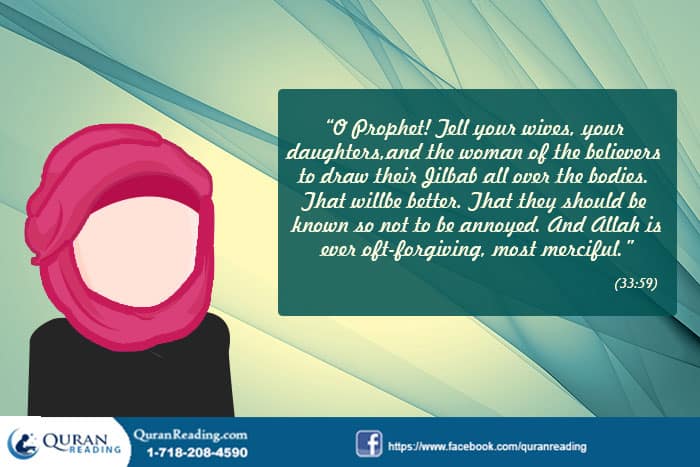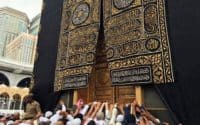
Mandatory Conditions Of Hijab For Muslim Women

Those who truly understand Islam and have in-depth knowledge of Quran and hadith are aware of the fact the value, rights and respect that Islam gives to women is unmatchable and there is no other culture, religion or law in the world that gives women such a status that empowers and reveres them in the way as Islam does.
Although people may somehow be convinced of all the rights that Islam gives to women and the kind of place they have in Muslim society, however, the one thing that is the hardest when it comes to convincing other is the Hijab that Muslim women wear. People think that it is a sign of subjugation and that is something that holds women back and makes them inferior. This is a wrong perception and Hijab actually is meant to give protection to women and it is a symbol of respect in Islam. This debate will be touched some other time in some other post. While this post today on QuranReading.com deals with the conditions in which wearing Hijab is mandatory for a Muslim women.

In Quran Allah Almighty says:

“O Prophet! Tell your wives, your daughters, and the woman of the believers to draw their Jilbab all over the bodies. That will be better. That they should be known so not to be annoyed. And Allah is ever oft-forgiving, most merciful.” (33:59)
Before moving on to the conditions, the need is to understand the word ‘Jilbab’ used in this ayah, as it is integral to fulfilling the condition of Hijab itself. The word ‘Jilbab’ refers to a piece of cloth in the form of a cloak that can be used to cover the whole body. Therefore, Muslim women are recommended to cover their bodies with a cloak so that they could have respect and not get exposed to any kind of maltreatment or sexual abuse from anyone.
There is another hadith related to the use or wearing of Jilbab that is to be worn as Hijab. Hazrat Um Atiya (RA) asked Prophet Muhammad (PBUH):
“O Messenger of Allah, one of us may not have a Jilbab.”
Prophet (PBUH) replied:
“Let her sister lend her one of her Jilbabs to wear.” (Muslim)
From the hadith it is obvious that there is no relaxation in wearing of Hijab, rather if a Muslim women does not have it available, she should ask of it from another sister and wear it.
Conditions For Wearing Hijab:
There are different conditions in which it becomes more than imperative for a Muslim women to wear Hijab. There are conditions and people mentioned in Quran in front of whom and which the wearing of Hijab is exempted. In Quran Allah says:
“Say to the believing men that they should lower their gaze and guard their modesty; that will make for greater purity for them; and Allah is well acquainted with all that they do. And say to the believing women that they should lower their gaze and guard their modesty; that they should not display their beauty and ornaments except what (must ordinarily) appear thereof; that they should draw their veils over their bosoms and not display their beauty except to their husbands, their fathers, their father in law, their sons, their step sons, their brothers or their brothers’ sons, or their sisters sons, or their women, or the slaves whom their right hands possess, or male servants free of physical needs, or small children who have no sense of the shame of sex; and they should not strike their feet in order to draw attention to their hidden ornaments. And O you Believers! Turn you all together towards Allah, that you may attain Bliss.” (24:30-31)
All the condition and people that are mentioned in this ayah are exempted from wearing of Hijab. Anyone or anything other than that, a women must wear Hijab. For the sake of understanding the conditions that can take place which make Hijab compulsory are discussed below.
1st Condition:
The first condition when Hijab becomes compulsory is when women get in front of men who are not Mehram to them and for whom the absence of Hijab might lead to development of sexual feelings. Therefore, whenever there is a condition where Muslim women have to go in front of people who are non-Mahram.
2nd Condition:
The second condition in which wearing of Hijab becomes compulsory is when there is a chance that a women is wearing such a dress that might reveal the private body parts of the women to other people in general and especially to non-Mehram men.
3rd Condition:
The third condition in which it becomes mandatory for a Muslim women to wear Hijab is when there is a chance of their adornments becoming exposed to the men who are not Mehram to them. The adornment differs for different scholars however a general consensus is that adornment refers to the ebbs and flows of the body. Therefore, if a dress is that revealing then a women must wear a cloak over it.
Conclusion:
In a nutshell, Hijab is not a constraint for Muslim women, rather who wear it wear it as an ornament that gives them respect as well as keep them pious and free from any disturbance that may be caused because of any unintentional sexual innuendo.




